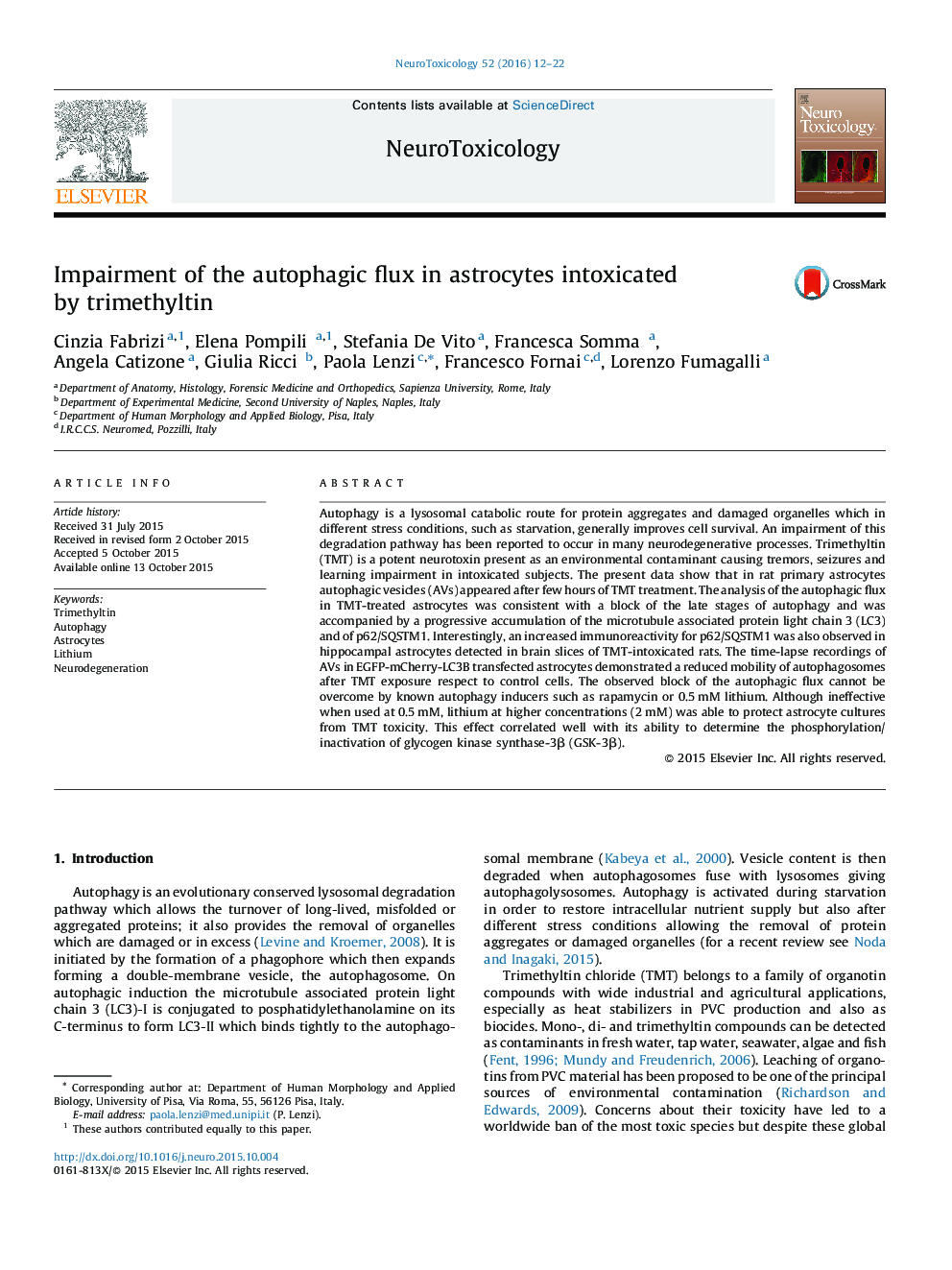| Article ID | Journal | Published Year | Pages | File Type |
|---|---|---|---|---|
| 5854654 | NeuroToxicology | 2016 | 11 Pages |
Abstract
Autophagy is a lysosomal catabolic route for protein aggregates and damaged organelles which in different stress conditions, such as starvation, generally improves cell survival. An impairment of this degradation pathway has been reported to occur in many neurodegenerative processes. Trimethyltin (TMT) is a potent neurotoxin present as an environmental contaminant causing tremors, seizures and learning impairment in intoxicated subjects. The present data show that in rat primary astrocytes autophagic vesicles (AVs) appeared after few hours of TMT treatment. The analysis of the autophagic flux in TMT-treated astrocytes was consistent with a block of the late stages of autophagy and was accompanied by a progressive accumulation of the microtubule associated protein light chain 3 (LC3) and of p62/SQSTM1. Interestingly, an increased immunoreactivity for p62/SQSTM1 was also observed in hippocampal astrocytes detected in brain slices of TMT-intoxicated rats. The time-lapse recordings of AVs in EGFP-mCherry-LC3B transfected astrocytes demonstrated a reduced mobility of autophagosomes after TMT exposure respect to control cells. The observed block of the autophagic flux cannot be overcome by known autophagy inducers such as rapamycin or 0.5 mM lithium. Although ineffective when used at 0.5 mM, lithium at higher concentrations (2 mM) was able to protect astrocyte cultures from TMT toxicity. This effect correlated well with its ability to determine the phosphorylation/inactivation of glycogen kinase synthase-3β (GSK-3β).
Related Topics
Life Sciences
Environmental Science
Health, Toxicology and Mutagenesis
Authors
Cinzia Fabrizi, Elena Pompili, Stefania De Vito, Francesca Somma, Angela Catizone, Giulia Ricci, Paola Lenzi, Francesco Fornai, Lorenzo Fumagalli,
